
Since breaking up with Adobe’s subscription model, I’ve had to rethink my post-production infrastructure and how I was going to move forward. After much research, I’ve decided that using open-source and free software was the way to go in my pursuit of independent filmmaking. The main issues I had was replacing software while still maintaining a similar workflow. Also important was the ability to collaborate with others when needed. Am I going to be able to create and distribute art and media as I have in the past? The answer is an excited YES!
Here are links to software that I find useful for filmmaking and media creation, either through direct experience or having researched as being viable applications for use in media creation. I am going to include open-source / non-commercial software, free commercial software, and academic software. Nearly all the software is platform agnostic, but I will note if any are platform specific. I’m not considering hardware in this particular blog, but I would recommend to get the best computer you can afford. You’ll need to figure out what your needs are for optimal performance – CPU speed vs. # of cores, amount of RAM, the best GPU you can afford, I/O cards, etc. And let’s not forget storage! The hardware aspects can easily fill an entirely separate blog. But, let’s move forward and focus on the software side of things on this page:
KING OF POST SOFTWARE:
Blackmagic Design’s DaVinci Resolve is in my humble opinion leading the postproduction revolution and blowing the doors open for anyone who cares to enter. Where else can you ingest, edit, create VFX, color grade, mix audio, and deliver all in one application? Despite not being open-source, they can afford to give away Resolve because their main business is selling hardware for the film and broadcast industry. Their equipment is highly affordable, but it’s not necessary for the software to work. Until you get into color grading and needing to connect to a reference monitor, you’ll be just fine without any hardware. One thing to note is that there is a paid version that costs $300 that provides additional functionality. The main differences are that the free version can’t do DCI 4K but can only render up to UHD, noise reduction is not included, several advanced plug-ins aren’t activated, it won’t ingest some 10-bit material without it being converted in other software, and it won’t output DCP files without a watermark to name a few. Regardless, the free version is still powerful; in fact, I’ve made a living color grading with the free version. The latest version 15.2 is just utterly amazing! It can do so much!
VIDEO EDITING SOFTWARE:
If all I need is an NLE (non-linear editor) to just focus on editing video, I would choose from one of the following:
 Shotcut software is completely open-source, cross-platform, and codec-independent. It has a full list of features including wide format support, audio editing, video effects, and hardware compatibility for monitoring and capturing media. With all of its functionality, I would seriously consider this software as an editing only application.
Shotcut software is completely open-source, cross-platform, and codec-independent. It has a full list of features including wide format support, audio editing, video effects, and hardware compatibility for monitoring and capturing media. With all of its functionality, I would seriously consider this software as an editing only application.
Media 100 has been around forever, in fact it’s been in use before Final Cut Pro even existed. I was pleasantly surprised to learn that not only did it still exist, but that it has been updated to support dozens of video standards up to 4K. It is a “Mac only” application, and has been tested up to High Sierra. It even includes Boris Red, which was a big deal for titles and transitions. One can find support on their Facebook group and on Creative Cow. If you miss how Final Cut 7 looked, you may want to try this out. I’m not sure why this is free, it may be a vehicle for Boris to sell advanced plug-ins for it, but it is fully featured and can export XML files as well as render out finished videos in industry standard codecs.
 HitFilm Express is an interesting application that combines editing and VFX features. Their feature set includes unlimited video and audio tracks in their timeline editor, full 2D & 3D compositing, tons of effects available (even more available as add-on purchases), and both Windows & Mac compatibility. The free version seems to be plenty functional, but their ultimate goal may be to sell you their advanced features. They do have a lot of tutorials available to learn this software to get you up and running quickly. This may be the perfect solution for YouTube Creators seeking an all-in-one package.
HitFilm Express is an interesting application that combines editing and VFX features. Their feature set includes unlimited video and audio tracks in their timeline editor, full 2D & 3D compositing, tons of effects available (even more available as add-on purchases), and both Windows & Mac compatibility. The free version seems to be plenty functional, but their ultimate goal may be to sell you their advanced features. They do have a lot of tutorials available to learn this software to get you up and running quickly. This may be the perfect solution for YouTube Creators seeking an all-in-one package.
 Lightworks is a heavyweight that’s been around for over 25 years. Used on The Wolf of Wall Street, LA Confidential, Pulp Fiction, Heat, Road to Perdition, Hugo, and The King’s Speech to name a few, this editing application is no slouch. Available for Mac, Windows, and Linux, there is a free version as well as different levels of paid versions. The free version limits your export options to Vimeo or YouTube 720p resolutions. You need to either subscribe (which I myself despise and am trying to get away from) or buy a permanent license to unlock the professional export features. Compared to Adobe’s and Avid’s business model, buying the full permanent license seems like a great purchase. But with all the other features included in the free one, why not try it out?
Lightworks is a heavyweight that’s been around for over 25 years. Used on The Wolf of Wall Street, LA Confidential, Pulp Fiction, Heat, Road to Perdition, Hugo, and The King’s Speech to name a few, this editing application is no slouch. Available for Mac, Windows, and Linux, there is a free version as well as different levels of paid versions. The free version limits your export options to Vimeo or YouTube 720p resolutions. You need to either subscribe (which I myself despise and am trying to get away from) or buy a permanent license to unlock the professional export features. Compared to Adobe’s and Avid’s business model, buying the full permanent license seems like a great purchase. But with all the other features included in the free one, why not try it out?
 Last, but not least is Kdenlive, an acronym for KDE Non-Linear Video Editor. It is primarily aimed at the GNU/Linux platform but also works on BSD and MacOS. Kdenlive is a full-featured, open-source video editor that is based on the MLT Framework for the bulk of its video processing power, and utilizes the FFmpeg libraries so that it can open and render any type of files, including ProRes and DNxHD codecs. It requires a bit more work to install, especially on a Mac; however, its feature-set looks very robust and it looks like a worthwhile download and install. For Linux users, this one may be a no-brainer.
Last, but not least is Kdenlive, an acronym for KDE Non-Linear Video Editor. It is primarily aimed at the GNU/Linux platform but also works on BSD and MacOS. Kdenlive is a full-featured, open-source video editor that is based on the MLT Framework for the bulk of its video processing power, and utilizes the FFmpeg libraries so that it can open and render any type of files, including ProRes and DNxHD codecs. It requires a bit more work to install, especially on a Mac; however, its feature-set looks very robust and it looks like a worthwhile download and install. For Linux users, this one may be a no-brainer.
 Want to get in on the newest video editor to hit the open-source scene? Olive Video Editor is a free non-linear video editor aiming to provide a fully-featured alternative to high-end professional video editing software. Olive is making rapid progress and users are already producing videos with it, but it’s still currently in alpha. What this means is that I wouldn’t necessarily edit a feature or anything important that I may want to enter into a film festival, but I would certainly mess around with it to see how it works and see if it can possibly turn into a viable alternative in the future. Olive is making rapid progress and users are already producing videos with it, but it’s still incomplete and not fully stable. Regardless they invite you to download the latest build and try it out for yourself. New features are being added every day; and, even if Olive is missing something you need, come back in a month or two and it’s possible it will have been implemented. This is an exciting opportunity to get in during the early stages of this NLE software development! Are you ready to try it out?
Want to get in on the newest video editor to hit the open-source scene? Olive Video Editor is a free non-linear video editor aiming to provide a fully-featured alternative to high-end professional video editing software. Olive is making rapid progress and users are already producing videos with it, but it’s still currently in alpha. What this means is that I wouldn’t necessarily edit a feature or anything important that I may want to enter into a film festival, but I would certainly mess around with it to see how it works and see if it can possibly turn into a viable alternative in the future. Olive is making rapid progress and users are already producing videos with it, but it’s still incomplete and not fully stable. Regardless they invite you to download the latest build and try it out for yourself. New features are being added every day; and, even if Olive is missing something you need, come back in a month or two and it’s possible it will have been implemented. This is an exciting opportunity to get in during the early stages of this NLE software development! Are you ready to try it out?
Overall, there are many editing solutions available for every budget. The ones that I’ve included here are the ones that I believe to be the most fully-featured for professional styled editing. I’ve thought about including Avid Media Composer First, but that is in my opinion a severely crippled application with ulterior motives of selling you subscriptions to their fully featured models. At least Lightworks gives you the full feature set (minus the pro export options) in it’s free version. And for a lot of us YouTube or Vimeo is quite often the final destination. However, if you need more output options, you may want to look into ShotCut or Media100 which are completely free, either the free or paid version of DaVinci Resolve (depending if you need advanced tools or 4K DCI), HitFilm Express, or pony up for full version of Lightworks if you need the all the pro features that Hollywood editors need. Whatever you choose, there are great options for everyone.
Before moving on to other media creation / editing tools, I would like to introduce a few utilities that I use in the video chain.
UTILITIES
Shutter Encoder is free encoding software that I use to transcode camera files into ProRes (or whatever codec I want), but it’s capable of so much more. Imagine if you took Adobe’s Media Encoder or Apple’s Compressor, simplified the interface, yet added a whole bunch of features that allow you to convert video, audio, images into any format. you want. That’s what Shutter Encoder does. I discovered this when I learned that the free version of DaVinci Resolve wouldn’t import my 10-bit 422 camera files from my Panasonic Lumix GH5s. Once I transcoded them to ProRes 4444 HQ files, they imported just fine into Resolve so that I could continue working with my V-LOG files as I normally would. Until I shell out the $300 for the Studio version, Shutter Encoder is my go to transcoder for those files that need it.
![]() DisplayCAL is open source Display Calibration & Profiling software that I use to calibrate my monitors (both my GUI & my video reference monitors). The neat thing about this software is that I can use it within Resolve by choosing “Calman” in the monitor calibration menu to create 3-D LUTs. Normally, software like Spectracal or LightSpace cost in the $1000s to purchase, but DisplayCAL brings calibration technology to the masses. Of course you’ll need to purchase hardware in order to calibrate your monitor, but prices start at $125 for a Datacolor Spyder and up to $230 for an X-Rite i1. Well worth it for decent color on your monitors. One important caveat regarding this software: if you are considering using this software, I’m assuming it’s because you (like myself) can’t afford to purchase SpectraCal or LightSpace. I have every reason to believe that DisplayCAL will work pretty well for the indie/ultra-low-budget/zero-budget filmmaker. Lightspace makes a comparison between all three calibration applications. DisplayCAL is not so bad for free, and most likely will suffice for the home editing and grading suite. However, if what you are working on is “mission critical” then you may want to consider renting or purchasing the commercial software.
DisplayCAL is open source Display Calibration & Profiling software that I use to calibrate my monitors (both my GUI & my video reference monitors). The neat thing about this software is that I can use it within Resolve by choosing “Calman” in the monitor calibration menu to create 3-D LUTs. Normally, software like Spectracal or LightSpace cost in the $1000s to purchase, but DisplayCAL brings calibration technology to the masses. Of course you’ll need to purchase hardware in order to calibrate your monitor, but prices start at $125 for a Datacolor Spyder and up to $230 for an X-Rite i1. Well worth it for decent color on your monitors. One important caveat regarding this software: if you are considering using this software, I’m assuming it’s because you (like myself) can’t afford to purchase SpectraCal or LightSpace. I have every reason to believe that DisplayCAL will work pretty well for the indie/ultra-low-budget/zero-budget filmmaker. Lightspace makes a comparison between all three calibration applications. DisplayCAL is not so bad for free, and most likely will suffice for the home editing and grading suite. However, if what you are working on is “mission critical” then you may want to consider renting or purchasing the commercial software.
 DCP-o-matic is cross-platform, open-source software that is used to create Digital Cinema Packages (DCPs) for playback on DCI-compliant projectors. It can take files in many different formats, including MP4, Apple ProRes, MOV, AVI, M2TS (from Blu-Ray), VOB(from DVD), WMV, MKV, JPEG, PNG, TIFF and lots of others. Many filmmakers who’ve screened at film festivals have encountered the need to create DCP files once they have been accepted. In the past, you usually had to go to a specialised post house to have one made, costing anywhere from $100s-1000s. This software is the first open-source software that also has a free playback application, which is really great. In the past there was no way to tell if the DCP files you created worked or not unless you tested in a theatre. Now, you have a chance to QC it on your computer before taking it to the theatre. Regardless one should always check it prior to your actual screening. This software is also in constant development and updated regularly, compared to other open-source DCP software that’s out there. The only other “reasonably inexpensive” option is the paid version of Resolve which has the Kakadu encoder license for DCP creation. I myself have used DCP-o-matic with great success and highly recommend it.
DCP-o-matic is cross-platform, open-source software that is used to create Digital Cinema Packages (DCPs) for playback on DCI-compliant projectors. It can take files in many different formats, including MP4, Apple ProRes, MOV, AVI, M2TS (from Blu-Ray), VOB(from DVD), WMV, MKV, JPEG, PNG, TIFF and lots of others. Many filmmakers who’ve screened at film festivals have encountered the need to create DCP files once they have been accepted. In the past, you usually had to go to a specialised post house to have one made, costing anywhere from $100s-1000s. This software is the first open-source software that also has a free playback application, which is really great. In the past there was no way to tell if the DCP files you created worked or not unless you tested in a theatre. Now, you have a chance to QC it on your computer before taking it to the theatre. Regardless one should always check it prior to your actual screening. This software is also in constant development and updated regularly, compared to other open-source DCP software that’s out there. The only other “reasonably inexpensive” option is the paid version of Resolve which has the Kakadu encoder license for DCP creation. I myself have used DCP-o-matic with great success and highly recommend it.
If you have subtitling needs for your movie, then Aegisub is the way to go. Aegisub is a free, cross-platform open source tool for creating and modifying subtitles. Aegisub makes it quick and easy to time subtitles to audio, and features many powerful tools for styling them, including a built-in real-time video preview. I’ve actually used this software to open .srt files and made type changes. It works very well!
AUDIO EDITING SOFTWARE:
While editing video, audio design is often happening during the process to move the story along. Some NLEs have quite a bit of audio capabilities within the application itself. However, once audio needs get more complex, it may be necessary to export the soundtrack to a DAW (Digital Audio Workstation) application. Even though ProTools is the industry standard, there are alternatives available for every budget.
DaVinci Resolve’s built-in Fairlight DAW is certainly high on my list for audio editing and mixing. Fairlight’s audio page within the Resolve suite has a complete set of recording, editing, mixing, sweetening, and mastering tools instantly available without having to export files to another DAW. I can also confirm that whatever audio plugins you may own definitely work with Fairlight also! This is a win-win for everyone!
 Next, we have Ardour, which may be the most fully featured open-source DAW available. It’s like combining Logic and ProTools into one application. Go to their website and check out their features. Cross platform for Mac, PC, and Linux! (Note: this is open-source software, but does request a donation fee for downloading).
Next, we have Ardour, which may be the most fully featured open-source DAW available. It’s like combining Logic and ProTools into one application. Go to their website and check out their features. Cross platform for Mac, PC, and Linux! (Note: this is open-source software, but does request a donation fee for downloading).
 Audacity was one of the first open-source applications that I remember downloading back in 2004. It’s a very simple multi-track editor and audio recorder that works on all platforms – Mac, Windows, and Linux. For how simple the interface looks, there is a lot of functionality within the app. It can pretty much import and export any audio format and works with nearly any audio plug-ins loaded on your machine. Very worthwhile download, and it’s free!
Audacity was one of the first open-source applications that I remember downloading back in 2004. It’s a very simple multi-track editor and audio recorder that works on all platforms – Mac, Windows, and Linux. For how simple the interface looks, there is a lot of functionality within the app. It can pretty much import and export any audio format and works with nearly any audio plug-ins loaded on your machine. Very worthwhile download, and it’s free!
 LMMS is cross-platform, open-source software for composing, arranging and mixing music. You can control the 16 built-in synthesizers and emulators via MIDI control, has thousands of musical instrument samples available, a full suite of plugins, and support for VST plugins on Windows or Linux. If you need to compose music for your film, here you go!
LMMS is cross-platform, open-source software for composing, arranging and mixing music. You can control the 16 built-in synthesizers and emulators via MIDI control, has thousands of musical instrument samples available, a full suite of plugins, and support for VST plugins on Windows or Linux. If you need to compose music for your film, here you go!
I’m including REAPER Digital Audio Workstation because it is just so darned inexpensive for how much functionality is built in to it. It has a 60 day fully functional trial period, and only costs $60 as long as your yearly gross revenue from using the software is less than $20,000; otherwise, it is $225 for a commercial license (still a bargain). I tried it for free during a summer audio class and really liked it. It’s another DAW that feels like a combination of Logic and ProTools in one application. Go check out the full feature list on their website.
3D ANIMATION / COMPOSITING / VFX SOFTWARE:
Leaving Adobe’s After Effects is probably the most disruptive hurdle in my quest towards open-source or free media creation. I can’t think of any other layer-based visual effects/motion graphics software other than Apple’s Motion (which for $50 might not seem like a bad idea for some Mac owners). However, the good news is that if you are willing to learn node-based software, there is an abundance of powerful open-source and free software available to you. Here are several examples of software I will be learning so that I can replace AE:
 I can’t stop from mentioning DaVinci Resolve’s Fusion suite. I am still utterly amazed at how much Blackmagic Design is putting into this incredible software suite. The free version is already so powerful, and for $300 for the exact same software the professional studios are using, it seems like the most logical choice. Regardless, download their free version and start producing work. Unless you absolutely need DCI 4K, I’m sure UHD or DCI 2K will work perfectly fine for most of us. This is one that I will absolutely be learning!
I can’t stop from mentioning DaVinci Resolve’s Fusion suite. I am still utterly amazed at how much Blackmagic Design is putting into this incredible software suite. The free version is already so powerful, and for $300 for the exact same software the professional studios are using, it seems like the most logical choice. Regardless, download their free version and start producing work. Unless you absolutely need DCI 4K, I’m sure UHD or DCI 2K will work perfectly fine for most of us. This is one that I will absolutely be learning!
If you haven’t heard of Blender yet, then you need to check them out now! Quoting from their website: “Blender is the free and open source 3D creation suite. It supports the entirety of the 3D pipeline—modeling, rigging, animation, simulation, rendering, compositing and motion tracking, even video editing and game creation.” It should come as no surprise that quite a few studios are actually choosing Blender over other commercial software, and not necessarily because of cost. Many artists believe that Blender may be the most powerful VFX software out there on any platform. This one should be high on your list of software to download and learn!
 MakeHuman is a cross-platform and open-source application to create realistic virtual humans. It includes tools for things like poses, animation cycles, managing facial expressions, hair and clothes. Via the MakeHuman library, users can preview and load poses, animation cycles, facial expressions, hair, shoes and clothes onto their character. It also offers tools for exporting virtual humans to other software, such as Blender, where further refinements can be made.
MakeHuman is a cross-platform and open-source application to create realistic virtual humans. It includes tools for things like poses, animation cycles, managing facial expressions, hair and clothes. Via the MakeHuman library, users can preview and load poses, animation cycles, facial expressions, hair, shoes and clothes onto their character. It also offers tools for exporting virtual humans to other software, such as Blender, where further refinements can be made.
Natron is open-source compositing software for VFX and motion graphics. It has powerful rotoscoping, keying, and tracking tools in addition to being cross platform across Mac, Windows, and Linux. Furthermore, along with OFX plugin compatibility there is a large community of open-source plugins to further enhance Natron’s functionality. This software has more of a focus on the compositing side of things and comparable to the commercial application Nuke.
Speaking of Nuke, software developer The Foundry has non-commercial versions of Nuke compositing software and Mari texture painting software for personal and educational use. Being non-commercial versions they both have some limitations including being limited to HD resolutions, some of their plugins being disabled, and non-compatibility with commercial versions of their software. However, if your project is in HD and you want to learn what many of the big studios are using, then you may want to download this software and check them out.
 For those of you who are students, Autodesk has free student software downloads for nearly all of their applications. These are full-featured applications available for you to use for educational purposes. You do have to register with your .edu email address and prove you are an actual student, but once you do, you get access to the big heavyweight applications including 3ds Max, AutoCAD, Maya, Flame, and Smoke to name a few. Some are cross-platform, others are platform specific for either Mac or Windows. If you are enrolled in school, I would certainly take advantage of this opportunity to use software costing $1000s for free!
For those of you who are students, Autodesk has free student software downloads for nearly all of their applications. These are full-featured applications available for you to use for educational purposes. You do have to register with your .edu email address and prove you are an actual student, but once you do, you get access to the big heavyweight applications including 3ds Max, AutoCAD, Maya, Flame, and Smoke to name a few. Some are cross-platform, others are platform specific for either Mac or Windows. If you are enrolled in school, I would certainly take advantage of this opportunity to use software costing $1000s for free!
 Sculptris, made by Pixologic who make Zbrush, is free digital sculpting and painting software. With its simple interface and focused toolset, Sculptris provides an excellent gateway into the exciting world of 3D. It’s features are easy to learn, even for someone with no experience in digital art, yet robust enough for creating base models. Great way to try out 3D sculpting and painting!
Sculptris, made by Pixologic who make Zbrush, is free digital sculpting and painting software. With its simple interface and focused toolset, Sculptris provides an excellent gateway into the exciting world of 3D. It’s features are easy to learn, even for someone with no experience in digital art, yet robust enough for creating base models. Great way to try out 3D sculpting and painting!
2D ANIMATION SOFTWARE
I’ve combed through a lot of 2-D animation software considered to be some “sort-of” Adobe Flash replacement. There is definitely a lot of software to choose from but I narrowed it down to the following applications based on their functionality and feature set pertaining to creating media:
Pencil2D is a program that lets you focus on hand-drawn animation. It has an extremely simple interface and timeline with 4 types of layers: sound, bitmap images, camera, and vector images. It’s perfect for beginners and uncluttered for the more experienced animators that just want to focus on drawing their animation cells.
Synfig Studio is another 2D animation software, designed for creating film-quality animation using a vector and bitmap artwork. It eliminates the need to create animation frame-by frame, allowing you to produce high quality 2D animation with fewer resources. This software features an advanced toolset and more cinematic options for the advanced animator. Everything you need to start animating!

 OpenToonz, based on the software “Toonz”, developed by Digital Video S.p.A. in Italy, has been customized by Studio Ghibli, and used for the creation of its works for many years. Dwango has launched the OpenToonz project in cooperation with Digital Video and Studio Ghibli. It has been used in the ink and paint, color design and digital composition processes of almost all of the works by Studio Ghibli and has unique features that have been iterated on based on the opinions of production staff, including the scanning tool “GTS” specializing in animation. What is super exciting about this software is the capability of adding a camera and using the scanning portion of the software as stop-motion animation software, much like the commercial software DragonFrame. If you are into stop-motion animation, this one is certainly worth a download.
OpenToonz, based on the software “Toonz”, developed by Digital Video S.p.A. in Italy, has been customized by Studio Ghibli, and used for the creation of its works for many years. Dwango has launched the OpenToonz project in cooperation with Digital Video and Studio Ghibli. It has been used in the ink and paint, color design and digital composition processes of almost all of the works by Studio Ghibli and has unique features that have been iterated on based on the opinions of production staff, including the scanning tool “GTS” specializing in animation. What is super exciting about this software is the capability of adding a camera and using the scanning portion of the software as stop-motion animation software, much like the commercial software DragonFrame. If you are into stop-motion animation, this one is certainly worth a download.
 Papagayo is a lip-syncing program designed to help you line up phonemes (mouth shapes) with the actual recorded sound of actors speaking. Papagayo makes it easy to lip sync animated characters by making the process very simple – just type in the words being spoken (or copy/paste them from the animation’s script), then drag the words on top of the sound’s waveform until they line up with the proper sounds. After syncing up mouth shapes with actual sounds, Papagayo can then export the result for use in your other animation applications. Papagayo, made by Smith Micro, is free to download and use for both Windows and MacOS.
Papagayo is a lip-syncing program designed to help you line up phonemes (mouth shapes) with the actual recorded sound of actors speaking. Papagayo makes it easy to lip sync animated characters by making the process very simple – just type in the words being spoken (or copy/paste them from the animation’s script), then drag the words on top of the sound’s waveform until they line up with the proper sounds. After syncing up mouth shapes with actual sounds, Papagayo can then export the result for use in your other animation applications. Papagayo, made by Smith Micro, is free to download and use for both Windows and MacOS.
IMAGE MANIPULATION SOFTWARE
OK! So what is the first software application that everyone thinks of regarding Adobe? It’s most likely Photoshop. Prior to my filmmaking ventures, I was in the printing industry and have pretty much used Photoshop since version 1 back in 1990. Additionally, I’m a photographer who’s been using Photoshop as my digital darkroom. Leaving Adobe and Photoshop was a huge deal for me. But today, we can thank the open-source community for giving us really strong alternatives.
GIMP (General Image Manipulation Program) is the ubiquitous cross-platform, open-source application that is as close to a Photoshop replacement that you will find. Started back in 1995, it has had plenty of time and development to grow into the powerful photo retouching, image composition and image authoring software that it is today. The interface may take a little bit of getting used to if you are coming fresh off of Photoshop, but if you are already experienced with photo retouching or image manipulation it’s easy enough to figure out. This is a no-brainer, I would download this immediately and start using it. I’ve even been using it for converting the images on this very website. Download GIMP, just do it! You won’t regret it.
Krita is a cross-platform and open-source painting tool designed for concept artists, illustrators, matte and texture artists, and the VFX industry. Krita has been in development for over 10 years and has had an explosion in growth recently. It offers many common and innovative features to help the amateur and professional alike. It looks pretty sophisticated and I am currently exploring it. A couple of super interesting features are its HDR capabilities as well as its OpenEXR support. I would say that this software is comparable to both Photoshop and Painter. Very much worth the download! (NOTE: website will not open in Safari, use Firefox or Chrome)
INKSCAPE is a cross-platform, open-source, professional quality vector graphics software used by design professionals and hobbyists worldwide, for creating a wide variety of graphics such as illustrations, icons, logos, diagrams, maps and web graphics. It has sophisticated drawing tools with capabilities comparable to Adobe Illustrator or CorelDRAW. It can import and export various file formats, including SVG, AI, EPS, PDF, PS and PNG. This is another no-brainer to download and complete your graphics suite. If you’re wondering why I’m including this software in a filmmaker’s blog, think about scalable elements that are needed for motion graphics. Furthermore, you have to design all your promotional materials for your film somewhere – and this software is the place to do it!
 While we’re on the topic of free software, Autodesk Sketchbook was just made free for everyone. There are both desktop and tablet versions; however, it looks like it’s limited to Windows (64 bit) and Mac on the desktop side but does Windows 10, Android, and iOS on the tablet/phone side of things. It certainly does look like very powerful drawing software and certainly has development resources. This looks very worthwhile to download on all my devices – desktop, tablet, and phone!
While we’re on the topic of free software, Autodesk Sketchbook was just made free for everyone. There are both desktop and tablet versions; however, it looks like it’s limited to Windows (64 bit) and Mac on the desktop side but does Windows 10, Android, and iOS on the tablet/phone side of things. It certainly does look like very powerful drawing software and certainly has development resources. This looks very worthwhile to download on all my devices – desktop, tablet, and phone!
PHOTO EDITING SOFTWARE
Darktable is the cross-platform, open-source replacement for Adobe’s Lightroom. It works as a RAW processor and digital negatives database. Big bonus points goes out to their “darktable styles repository” that has loads of preset looks ranging from film emulation to stylised looks. If Adobe’s Lightroom (or Apple’s Aperture) played a large role in your photo editing, Darktable will certainly be an excellent replacement!
Luminance HDR is an open-source application that focuses on HDR imaging. What this allows you to do is to creatively modify dynamic range or tone-map high-dynamic-range images; or, create HDR images from a series of exposure bracketed photos. It includes support for OpenEXR and RAW photos, as well as all the standard photo formats such as tiff and jpeg. This is a very useful way of focusing on HDR imaging.
Hugin is a very easy to use open-source panoramic photo stitcher. You can take a series of overlapping photos, such as a 360º panorama on a tripod, and stitch it together into an immersive panorama photo. If you’ve ever used the automated photo stitching function in Photoshop, it works exactly like it except that Hugin is a stand-alone application that just focuses on stitching. I think it works really great. I thought it was one of those functions I was going to miss when abandoning Adobe, but I’m super happy to say that I’ve been having fun using this little app. If you like creating panoramas from overlapping photos, then this is definitely for you!
AutoStitch is a very simple photo-stitching software application that is really growing on me. Developed and licensed by the University of British Columbia, AutoStitch takes a step forward in panoramic image stitching by automatically recognising matching images. This allows entire panoramas to be constructed with no user input whatsoever. AutoStitch is incredibly simple to use! Just select a set of photos, and AutoStitch does the rest: digital photos in, panoramas out. Their auto-stitching algorithm is licensed out in commercial products and even to Industrial Lights & Magic for producing panoramas in their film productions! There is a free “demo” version that you can download and use for non-commercial purposes. I suppose that means that it is perfectly fine for you to use on your personal photo projects. I would just download it, try it out and let it do its thing. There’s nothing to set, just select your photos and PRESTO – you got a panorama!
SCREENWRITING / PREPRODUCTION SOFTWARE
Once upon a time, Celtx was king of the open-source screenwriting world. Everyone I knew in film school used it in lieu of Final Draft; in fact, the only students who bought the academic version of Final Draft were the ones in the screenwriting track who knew that’s what they wanted to pursue for a living. Fast forward to today, Celtx is now one of many cloud-based screenwriting apps that are on the “freemium” business model. However, after much searching on the web, I’ve found some promising apps that may fulfil the need for open-source/free screenwriting software:
KIT Scenarist seems to be the only cross-platform and open-source desktop screenwriting application that I could find. It has a modern looking dark interface and has a lot of useful features including a research tab for organising source materials, a cards tab that functions like a cork board providing you a visual way to build your structure, a script tab where you actually write your screenplay, and statistics tab that graphs your story structure and character activity. This seems like a viable contender for those of us that can’t shell out for Final Draft. It does have the ability to export to .fdx and .pdf files, so one can share the script without worrying about whether the recipient can open it or not. Worth checking this one out!
Trelby is an open-source screenwriting application that runs on Linux and Windows. It has a simple interface that looks very unobtrusive so that you can focus on your writing. It automatically follows screenplay formatting guidelines while checking for formatting errors, has spell-check built in, a worldwide character name database, and has a full-screen mode for you to focus on writing. Despite its simple looks it’s packed with useful features such as reports for scene and character breakdowns, and can even graph your character’s activities in the script. It’s unfortunately not available to Mac users, but all you Windows and Linux users may want to consider this for your screenwriting needs.
DramaQueen Free is the basic screenwriting app that transforms from their professional trial version into a freemium version. The basic version still has a lot of functionality, most importantly the formatting of the script to the official rules of the Writers’ Guild. It claims to have a perfect workflow with Final Draft that can transfer all formatting elements to and from either application. It also seems to be the only cross-platform desktop application with WYSIWYG page layout that you can see while you’re typing. Additionally, their DramaWiki page is a great informational resource for screenwriting and dramaturgy, well worth bookmarking on its own!
Cloud-based screenwriting apps are also worth a mention. The main advantage of using these type of services is that you have access to all your materials anywhere with an internet connection. In theory, you don’t even need to own a computer, you can go to your local library and use one of their computers to write your script!
Since having gone cloud-based, Celtx has turned from an open-source desktop app to a freemium based toolset ranging from basic screenwriting to full on preproduction planning tools that help you storyboard, breakdown the script, budget, and schedule your shoot to name a few things. The important thing is that the free version grants you the basic screenwriting tools that you need to write. It can import Final Draft files retaining its format and can export PDF and Fountain files. One of the things I like about Celtx’s interface is that it shows page formatting in WYSIWYG manner, unlike some other cloud-based or even desktop solutions. Celtx is a great contender if you want to write your script for free right now, and then move up to its paid plan by the month during your preproduction/production period to utilise all of its feature set when you need it.
This list of screenwriting apps is by no means the definitive list of what’s available out there. If you do a search online, you will find these ones amongst a plethora of other solutions ranging from formatting plugins for text files to full-blown commercial apps. What set these ones apart for me were their various feature sets for the $0 budget. I think these are worthwhile alternatives to Final Draft for the independent filmmaker.
Here are a couple of apps from Wonder Unit that help you before, during, and after your screenwriting process:
Characterizer is a free cross-platform character development application to help you with your screenwriting. It helps you define a character’s value system in order to discover conflict, dilemmas, and common ground between characters. It seems like a very worthwhile download for you to get to know your characters better.
Storyboarder is a free cross-platform app that does what its name says it does. Aside from drawing directly in each frame, you can edit them in an external image editing app and round-trip it back into Storyboarder; use a shot-generator that creates reference shots consisting of mannequins posed and framed via your parameters ready to be drawn over; or if you like old school pen & paper you can print out templates that you can draw on and then reimport back into the app with your cameraphone. It also allows you to export to any editing software, print out a PDF contact sheet, or save an animated GIF. I am definitely using this software to storyboard my next movie!
Bibisco novel writing software may be the most thorough way for you to figure out and map out your story and characters for your script. Granted, it’s really designed for writing novels, but the toolset available in the software really goes beyond anything I’ve ever seen, whether in screenwriting books or in other software. Having just used it prior to writing this description of the software, I can say it is totally worth the download to help you develop everything about your script. Oh, and did I mention it is cross-platform, open-source, and free! If you’re about to embark on a new script, download this and you won’t regret it!
![]() Need to make call sheets for your production? Studio Binder is a sophisticated cloud-based app for creating call sheets in its basic free version. Of course, they want to sell you a subscription for all of their other features, but their “free forever” plan allows you to work on one project at a time, manage your contacts, and create unlimited call sheets for your project. Sounds like a good deal, and way less tedious way to create a properly formatted call sheet.
Need to make call sheets for your production? Studio Binder is a sophisticated cloud-based app for creating call sheets in its basic free version. Of course, they want to sell you a subscription for all of their other features, but their “free forever” plan allows you to work on one project at a time, manage your contacts, and create unlimited call sheets for your project. Sounds like a good deal, and way less tedious way to create a properly formatted call sheet.
DESKTOP PUBLISHING / OFFICE SOFTWARE
You may be wondering why I’m including an application like Scribus in a filmmaking software blog. Well my answer is where else are you going to design and layout all of your promotional materials, such as your digital media packet in PDF format, or printed materials such as posters, flyers, brochures, stickers, and even DVD covers (if those still are a thing)? Scribus is the perfect cross-platform, open-source application to replace Adobe’s InDesign or Quark Xpress. It has professional publishing features and ICC color profile management. Including this amongst your creative apps completes your open-source creative media-making suite!
Fontbase is free, cross-platform font management software that allows you to activate/deactivate fonts on demand for your various projects. If you wonder why you would need font management, a little known fact is that having too many fonts loaded in your system’s font folder slows down the performance of your computer as well as delays opening your apps. By just having the basic system fonts inside your system folder, you increase performance and application speeds. What this allows you to do is to store your fancy designer fonts (or load Google fonts or any other internet based fonts) and activate when needed for any of your typographic needs, such as motion graphics for your title design or a fancy promotional piece for your movie. A very worthwhile download.
LibreOffice may be the best cross-platform and open-source alternative to Microsoft’s Office suite available. With LibreOffice, you can use all of those cool budgeting templates, write your grant request proposals, and anything else you would need office software for.

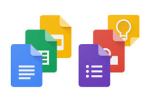 Google‘s suite of cloud-based office apps, is undeniably a strong contender in replacing the concept of desktop office apps. And in this day and age, who doesn’t have a Gmail account already? I certainly use their email, cloud storage, and have certainly used their various office apps at times, especially when documents have been shared with me. Docs, Sheets, and Slides pretty much takes care of nearly all your office needs. I’ve also have integrated Google Calendar for sharing call times and locations with crew and cast so that they always know where they need to be (in addition to the call sheet they’ve received). If you don’t want to bother with downloading and installing desktop applications, then Google’s Cloud computing may be all you need.
Google‘s suite of cloud-based office apps, is undeniably a strong contender in replacing the concept of desktop office apps. And in this day and age, who doesn’t have a Gmail account already? I certainly use their email, cloud storage, and have certainly used their various office apps at times, especially when documents have been shared with me. Docs, Sheets, and Slides pretty much takes care of nearly all your office needs. I’ve also have integrated Google Calendar for sharing call times and locations with crew and cast so that they always know where they need to be (in addition to the call sheet they’ve received). If you don’t want to bother with downloading and installing desktop applications, then Google’s Cloud computing may be all you need.
![]() Airtable is a cloud-based spreadsheet/database combination with loads of templates available, including quite a few geared for film and media production. It has the capability of integrating with other popular cloud-based apps. I myself have used this app before for tracking equipment inventory and keeping tabs on invoices. Explore their website and I’m sure you’ll find plenty of relevant uses for this app.
Airtable is a cloud-based spreadsheet/database combination with loads of templates available, including quite a few geared for film and media production. It has the capability of integrating with other popular cloud-based apps. I myself have used this app before for tracking equipment inventory and keeping tabs on invoices. Explore their website and I’m sure you’ll find plenty of relevant uses for this app.
CONCLUSION
I truly believe that we are living in the era of democratised media creation. There is an outstanding abundance of free software available to anyone who wants it. This list is by no means a final and absolute list; rather, it’s a curated list of software that I believe is useful and as close to paid commercial software as you’re going to get. I am curious to hear your thoughts in the comments section. If there is a useful application I didn’t include, please feel free to share with us in the comments section. Cheers!
Join Amazon Prime – Watch Thousands of Movies & TV Shows Anytime – Start Free Trial Now


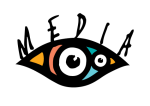
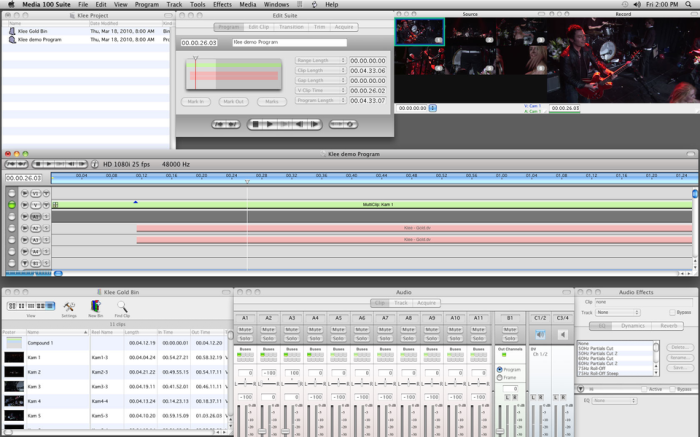









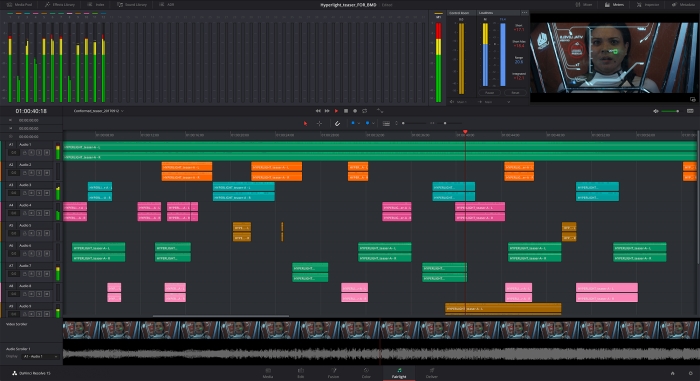

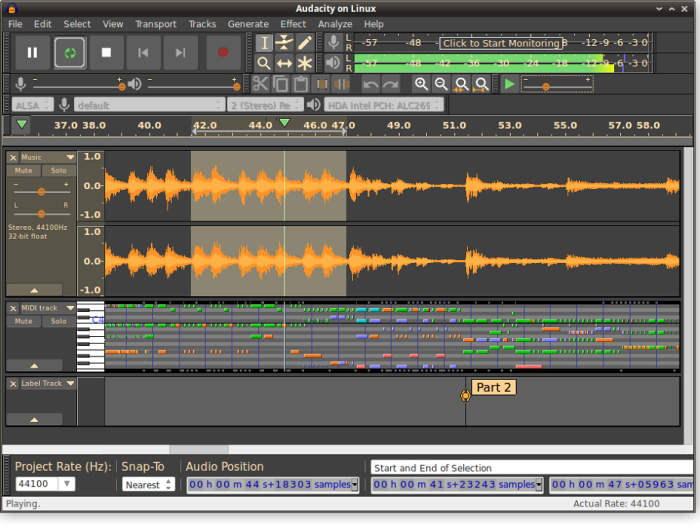










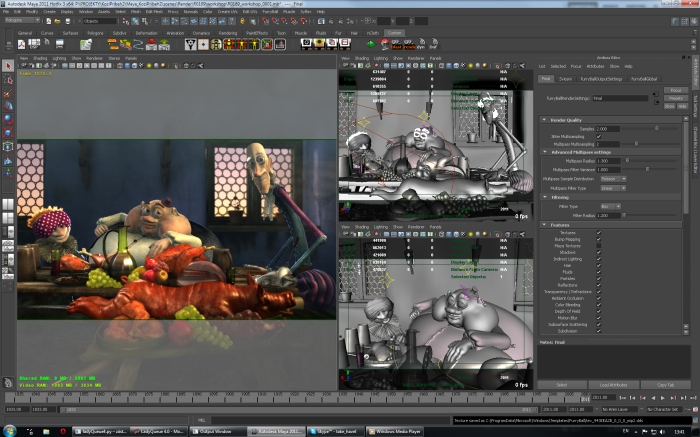








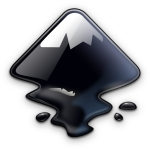



























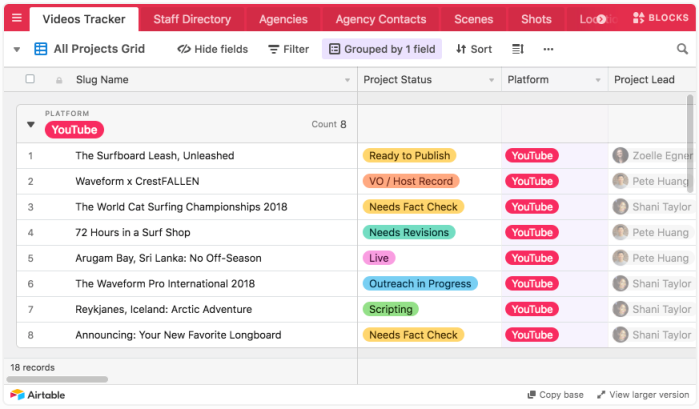
What a great collection and descriptions. Thank youuuuuu!
Thank you for checking it out! Please share with everyone you know. Cheers!
Resolve has the biggest learning curve, ShotCut is amazing for a free video editor and I couldn’t do my current work without the power of Premiere Pro!
I myself use Resolve Studio for all my post needs, as well as for most of my professional work doing editorial conforming. For paid work, one should use the tools that get the job done. For unpaid work, I advocate to spend as little money as necessary. Any software that I bought for a job has paid itself off when billing clients. Premiere Pro is cool also. On the occasion that I need it for client work, the monthly fee is billed to the client. The free software blog is merely a chance for the zero-budget filmmaker to have access to free creative tools. Use what’s best for the project your on.